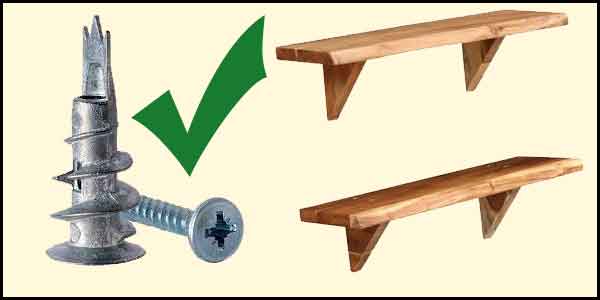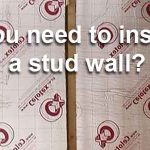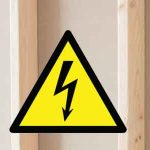In most cases, you won’t have any problem fixing a new shelf to a stud wall. However, the amount of weight it can support will depend on how you fix it in place.
Ideally, you would fix your shelves straight into the timber uprights in the stud wall for the strongest fixing. However, this is not always possible. If this is the case, you will need to use specially designed plasterboard fixings. Using this method wouldn’t be quite as strong as screwing directly into the studwork.

In comparison, fixing shelves to a solid wall is quite simple. You can simply drill into the wall and add plugs and screws. This give a very secure fixings and will ensure your shelves stay securely in place.
However, the majority of a stud wall is hollow. This means you need a different method to put shelves on a stud wall. Generally you will have timber uprights in the wall that can be found every 400mm. In some instances they can also be spaced 450mm or 600mm.
400mm is definitely the most common, so that is the distance we will use in this article.
The timber that forms these uprights, is generally around 50mm in thickness. This means that for every 400mm of plasterboard there is only an area of 50mm that has something solid behind it (wood).
Fixing into these studs will definitely give you the best possible fixing.
Finding timber studs to screw your shelf too
Let me start by saying, you do not need to go out and purchase a stud finder. If you already have one great, it will definitely help you to find studs. However, it isn’t 100% necessary. Studs are usually pretty easy to find without one.
We already know that studs are most likely spaced at 400mm centres. This means that one corner where the wall starts, will have the middle of a stud 400mm from that corner. Following this, there should be a stud every 400mm.
So, before you start screwing holes in your plasterboard, you should check to confirm where the studs are.
The first way to do this is tap the wall.
In areas where the wall is hollow, it will sound completely different to an area that has a stud behind it. You should be able to tell there is a stud, as it will no longer sound hollow.
The second way you can find studs is check the skirtings. Skirting boards will either be fixed with nails or screws and in some cases, you are able to find evidence of where the fixings are. This is usually quite subtle, but if you look closely, you can often find them.
So, if you find an area that doesn’t sound hollow when tapped, and there are fixings below that in the skirtings, you have almost definitely found a stud. From here other studs should be 400mm away from the centre of this one.
Also, if you want to double check you can always use a bradawl, or even a screw to check the stud is definitely there. Just be aware you will need to fill any hole you create. Therefore, it’s definitely better to try find the stud before you start jabbing holes.
Fixing your shelves to the stud wall
If your shelves have brackets that are 400mm, or if they are adjustable. Then you are in luck, and you can easily fix your shelves by simply screwing straight into the studs.
However, this is not always the case. Sometimes the bracket will be fixed in place, and this causes you to miss the second upright. If this is the case, we will need to fix the other side (the side missing the stud) using plasterboard fixings
These are special plugs that fix into the plasterboard, and you screw into them. There are several different designs and I quite like the metal self-driving plasterboard fixings. Fell free to look at other styles, but these are the ones I use, and they have always worked well for this type of job.
Also, if one side of your shelf is fixed to a stud (usually with 2 fixings), this will add plenty of support combined with plasterboard fixings on the other.
If you have too, you can also fix both sides with plasterboard fixings. You may want to do this if you’re trying to place your shelves in a specific place. The positioning could mean you miss all timber studs entirely.
This is fine, you just need to remember that your shelf won’t be quite as strong. These types of fixing can generally hold up to 20kg. Which is still a decent weight and unless you want to shelf something particularly heavy you should be fine.
To put this into context 20kg is equivalent to 20 litres of water, or 20 bags of sugar. So, if this shelve is just for books or ornaments it will be completely fine, even if you only attach it with plasterboard fixings. Just probably avoid putting anything heavy on it like dumbbells or a toolbox.
Mark out to make sure your shelf is level
Once you decide where the shelf is going you can fix it to the wall. To get started determining where your first fixing will be and mark the wall with a small vertical line. Next measure across the distance to your hole on the other side and draw another line.
Following this take a level and mark across both vertical lines. Now you will have 2 little crosses that are the correct distance for your brackets and completely level. Simply fix your screws on these marks.
You could also fix one side and then place your level on top holding the shelf level to mark your second hole. This will certainly be easier if you only have a small boat level.
Conclusion
Putting shelves on a stud wall is completely acceptable. Even if you can’t fix your shelves to the timber studs a plasterboard fixing will still do a really good job. This type of fixing alone can hold a decent amount of weight.
Obviously where possible you should try to get some fixings in the stud work. As this will make your shelves much stronger.




